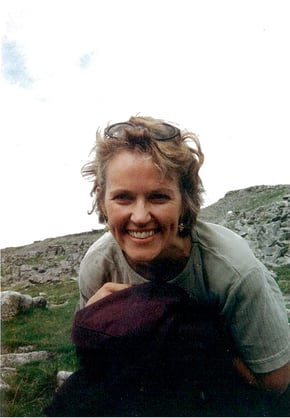The latest on Fr. Spitzer's vision as well as more information about the treatment he is hoping to receive.
Many of our Magis readers and supporters have been asking for an update on the stem cell therapy Fr. Spitzer was evaluated for last year. He is patiently waiting for the FDA to approve the procedure. At this point the FDA has not signaled a specific timeframe for approval, but if/when we hear something we will certainly let all of you know.
In the meantime, we thought we might shed light on what kind of vision issues Fr. Spitzer deals with on a daily basis, learn a little more about the condition which is causing it, and the treatment he is waiting for.
Retinitis Pigmentosa
Fr. Spitzer’s near-blindness is caused by a genetic disorder known as retinitis pigmentosa. The retina is a light sensitive layer of cells at the back of the eye. Light energy striking these cells-a mixture of rods and cones-is converted to signals sent to the brain via the optic nerve. Rods are more prolific and are primarily used in low light conditions, perceiving shape and outlines rather than color. Cones add color to the image signals sent to the visual cortex of the brain: they are less active in low light conditions.
As you can guess, the slow deterioration of this layer of cells reduces not only visual acuity but in some cases can reduce one’s visual field. Visual acuity refers to the clarity of the image perceived by the person. This quality of the image is the basis for the Snellen eye chart. A person with 20/70 vision can see at 20 feet what a person with 20/20 vision can see at 70 feet. If you can’t read the top line at 20 feet you have 20/200 vision or worse. Father is hoping for a restoration of at least 20/500 which would be a significant improvement for him!
This is an image of what 20/200 vision looks like:

In order to be declared legally blind, one’s best corrected vision must be less than 20/200 or have a reduced visual field of 20% (what the person can see without moving one’s head from side to side). Apparently, Fr. Spitzer does not suffer from a reduced visual field, but describes his vision as a kind of darkness and blurriness.
Proposed Treatment
The proposed treatment for Fr. Spitzer involves adult stem cells, specifically “induced pluripotent stem cells” or iPSCs.
Treatments using stem cell therapy for retinal degenerative diseases are being explored in trials at several institutions, but Fr. Spitzer is being treated at the University of Iowa. His doctor, Dr. Stone, an experienced eye surgeon, has an impressive research history and has created a nonprofit genetic testing laboratory that can detect more than 20 different inherited eye diseases. He is currently the Director of the Institute for Vision Research at the University of Iowa where cell replacement therapy in degenerative eye disease has been a central goal for the investigators.
How Cell Replacement Therapy Works
Our body is made up of trillions of cells, but they are not all alike. Obviously, we have muscle cells, skin cells, bone cells, connective tissue cells, nerve cells and so on. A stem cell, however, is an undifferentiated (non-specific) cell found in tissues throughout the body that can generate more cells of its type or change (differentiate) into specialized types of cells. There are two broad categories of stem cells, embryonic and adult stem cells. The controversy over the use of embryonic stem cells is due to the destruction of the embryo required to obtain them. There is no such ethical issue in the use of adult stem cells. These are extracted from the individual with the advantage of making them patient specific. In the more recent advances mentioned above (iPSC) any body cell can be “induced” to become a cell capable of generating a specialized “target” cell.
In the treatment for Fr. Spitzer, cells taken from his arm have been both cultivated into retinal tissue and corrected to eliminate the defective gene. They will be loaded onto an artificial “scaffold” (created by a 3D printer) to provide structural support with channels for the flow of nutrients as the cells proliferate in situ.
(For a technical and detailed look at other recent advances in stem cell therapy treatments, you can read this article.)
Since the FDA regulates cellular and gene therapy products, the biomaterials used for this scaffold are most likely one focus of the investigation. Any time a foreign substance is introduced to the body, the concern is twofold: Is the material in any way toxic and how will the body respond to its presence? The FDA will review the results of the research to determine if the procedure is likely to produce the desired results without harm to trial participants and future patients.
Please pray that this process will be completed soon, so that the treatment of Fr. Spitzer’s condition can begin!
Message from Fr. Spitzer
“I appreciate the concern expressed by so many of you and your prayers for me as I await a treatment approved by the FDA. Though this would be a true blessing, I receive so many graces from the condition of near blindness—such as, humility, deepened faith, detachment from the world, and enhanced empathy and compassion for others. The graces are so deep and manifold that I often wonder whether I should be praying for alleviation of my condition, so I have decided to put myself completely in the hands of God—the best course of action for all dimensions of life. I will pray for all of you who are praying for me, so that the Lord’s will may be done in our lives and that we may all experience Paradise together. God bless you.” -Fr. Robert Spitzer
Join Our Email List!
Subscribe to Magis Center's email list and get updates on Magis Center News and new posts. Subscribe at the button below:


